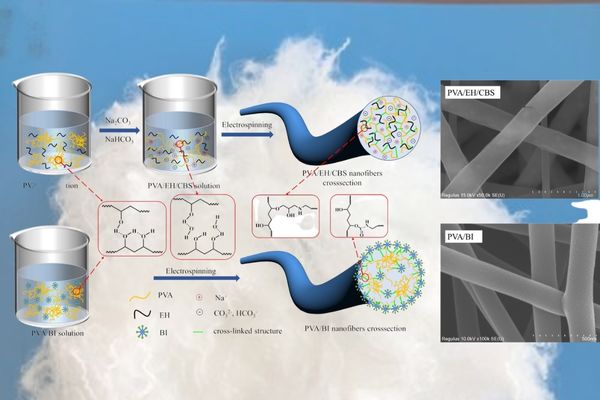Solubility is a non-technical test that helps to distinguish soluble fibers from other textile fiber in a better way. Many fibers are soluble. Think of polyester fiber. It is soluble in a hot meta-cresol. Different fibers dissolve in different acidic solutions. We need to identify an accurate solvent to distinguish fibers easily. Figuring out a fiber has become accessible even if fibers are chemically like one another.
What is Soluble Fiber?
Soluble fibers are water-soluble fibers that are the raw material of PVA (Poly-vinyl alcohol) staples. They are one material that gets dissolved in water even at room temperature. A few of the soluble fibers are functional in a non-woven fabric.
Solubility, being the chemical property, confirms the solute to be dissolved in a solvent-like substance. Water soluble fibers are composed of PVA and have better dimensional stabilities. Most textile fibers are soluble in hot water at 100 degrees Celsius. They shrink, but they also tend to maintain their tensile strength.
Soluble Textile Fiber Examples
Among the different examples of soluble textile fibers, there is a polyvinyl alcohol fiber. Other examples with an in-depth elaboration have been described below:
1. PVA-based fiber

They are cellulose fibers that are suitable for their features. PVA-based fibers are popular for their high tensile strength. They are bleached patterned. The use of PVA-based fiber is in spinning and in making non-woven fabric. However, they are sustainable and chemically resistant. Other features of these PVA-based fibers are:
- Producing fine-spinning yarn
- Producing shrinkable fabric
- This applies to embroidered clothing
- High-strength and polyvinyl alcohol
- Producing High Strength of rope and safety net.
2. Nylon
Nylon is a soluble fiber in HCL and Sulfuric Acid.
3. Spandex
Spandex is also soluble in a dimethylformaldehyde solution.
4. Cotton, Flax, Viscose, Silk, and Wool
They are soluble, mostly in the solution of Sulfuric Acid. Apart from this Sulfuric Acid, Viscose is soluble in Sodium Zincate. It is also soluble in
5. Other soluble fiber examples are:
- Cotton: They are soluble in around 70% of the solution of both sulfuric acid and cuprammonium hydroxide.
- Silk: Silk is soluble in 5% of the solution of caustic soda
- Wool: They are soluble in five percent of the caustic soda solution.
- Linen and Jute: They are soluble in 705 sulfuric acids. They provide a yellowish-brown solution.
- Acetate rayon: The acetate rayon is soluble in the acetone nature.
- Acrylic: This is a soluble fiber in boiling dimethyl formamide.
- Polyamide: They are soluble in a meta-cresol.
- Viscose Rayon: This is a soluble fiber in 60% sulfuric acid solution with an added cuprammonium hydroxide.
Characteristics of Soluble Fiber
There is a handful of t features of soluble fiber which is worth appreciating. They are as follows:
- Better degrading in the environment
- Uniform sizing
- Better corrosion resistance
- Ideal strength, elongation, and strength
- Better acid resistance
- Colorless and transparent solution
- Easy hydrolysis with less pollution
Application of the Soluble Fibers
There are two ways in total in which water-soluble non-woven fabrics get made. They are the high reduction of the alcoholic method and the low alkali alcoholics method. Here, the excellent features are the soluble fibers are functional and they have better moisture absorption. Both strength and coarseness are good enough to have an impact resistance. The strength does not get lost due to the weather resistance ability.
Water soluble fibers have an application area in making soluble bags and other daily-use products gowns, gauze, work clothes, caps, and bedsheets. Also, the soluble fiber has an application in an embroidery-based fabric where there is a patterned design. The soluble fibers also get used in improving the paper’s strength and toughness. It improves fracture and folding resistance.
Conclusion
Soluble fibers shrink to some extent in the water. It has better stability under humidity with no content and better tensile strength. PVA-based fibers are water-dissolved and available in temperatures up to 100 degrees Celsius. The above-mentioned fiber examples are well-known to the textile industry. Apart from those, there is Triacetate, which is soluble in Acetone. Moisture, solvent solubility, and heat conductivity depend on the fiber.
